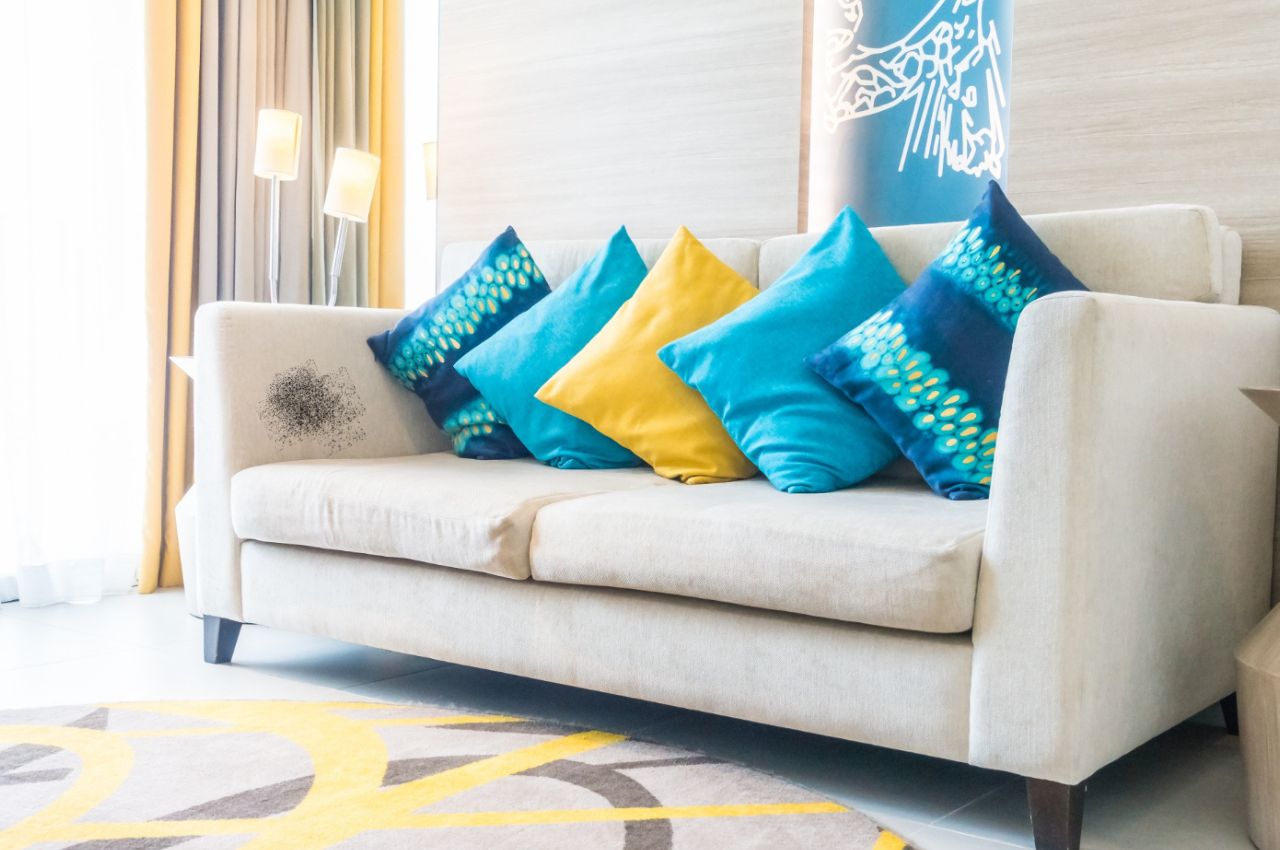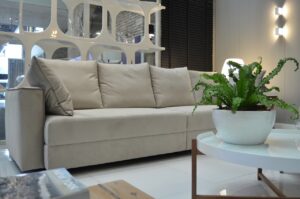
Mould and mildew can quickly ruin the look and feel of your upholstered furniture. Not only are they unsightly, but they can also cause unpleasant musty odours and potential health issues. Australia’s warm, humid climate provides the perfect breeding ground for these fungal growths. However, with the right techniques and products, you can effectively remove mould and mildew from your upholstered pieces and restore them to their former glory.
Understanding Mould and Mildew
Before we dive into the cleaning process, it’s essential to understand the difference between mould and mildew. Mildew is a surface fungus that appears as a powdery or downy growth, typically white or grey. Mould, on the other hand, penetrates deeper into the material and appears as fuzzy or slimy patches in various colours, such as green, black, or blue.
Step 1: Prepare the Area
Start by moving the affected furniture piece to a well-ventilated area, preferably outdoors or in a room with open windows and fans. This will help prevent the spread of mould spores and ensure proper air circulation during the cleaning process. In Australia’s humid climate, good ventilation is crucial for preventing mould and mildew growth.
Step 2: Vacuum the Surface
Using the upholstery attachment on your vacuum cleaner, gently vacuum the affected area to remove any loose mould or mildew spores. This step is crucial to prevent further spreading and contamination.
Step 3: Create a Cleaning Solution
For mildew, mix one part white vinegar with one part water in a spray bottle. Vinegar is an effective and natural mildew remover. For mould, you’ll need a stronger solution. Mix one part bleach with three parts water in a separate spray bottle. Bleach is a powerful disinfectant that can kill mould spores.
Step 4: Test for Colour fastness
Before applying the cleaning solution, test it on an inconspicuous area of the upholstery to ensure it doesn’t cause discolouration or damage. Spray a small amount and blot with a clean, white cloth. If the colour transfers to the cloth, you may need to use a different cleaning method or seek professional assistance.
Step 5: Apply the Cleaning Solution
Spray the affected area generously with the appropriate cleaning solution, ensuring it penetrates deep into the upholstery. Allow the solution to sit for 10-15 minutes to work its magic.
Step 6: Scrub and Blot
Using a soft-bristled brush or a clean, damp cloth, gently scrub the affected area in a circular motion. This will help loosen and lift the mould or mildew from the upholstery fibres. Blot the area with a clean, dry cloth to absorb any excess moisture and remove as much of the fungal growth as possible.
Step 7: Rinse and Dry
If you used a bleach solution, rinse the area thoroughly with clean water to remove any residual bleach. Blot the area with a dry cloth to absorb as much moisture as possible, then allow the upholstery to air dry completely. You can use fans or a dehumidifier to speed up the drying process, which is essential in Australia’s humid climate.
Step 8: Deodorize (Optional)
If the mould or mildew has left behind an unpleasant odour, you can deodorize the upholstery by sprinkling baking soda over the affected area. Let it sit for several hours or overnight, then vacuum it up.
Step 9: Prevent Future Growth
To prevent future mould and mildew growth, address the underlying moisture issue that caused the problem in the first place. This may involve improving ventilation, fixing leaks, or using a dehumidifier in damp areas. Additionally, consider using mould-resistant upholstery fabrics or applying a mould-resistant treatment to your existing furniture. In Australia’s humid climate, taking preventive measures is crucial to avoid recurring mould and mildew issues.
Professional Assistance
If the mould or mildew growth is severe or has penetrated deep into the upholstery, it may be best to seek professional assistance. Experienced upholstery cleaners in Australia have access to specialized equipment and solutions that can effectively remove stubborn fungal growths without damaging the fabric.
Maintaining a Healthy Home Environment
Removing mould and mildew from your upholstered furniture is not only important for preserving the appearance and longevity of your furniture but also for maintaining a healthy home environment. Mould and mildew can trigger allergies, respiratory issues, and other health problems, especially in individuals with compromised immune systems or pre-existing conditions.
By following these steps and taking preventive measures, you can effectively remove mould and mildew from your upholstered furniture, ensuring a fresh and healthy living environment. Remember, prompt action is key to preventing further damage and potential health risks, particularly in Australia’s warm and humid climate.
Also read: How to Clean a Used Couch?








